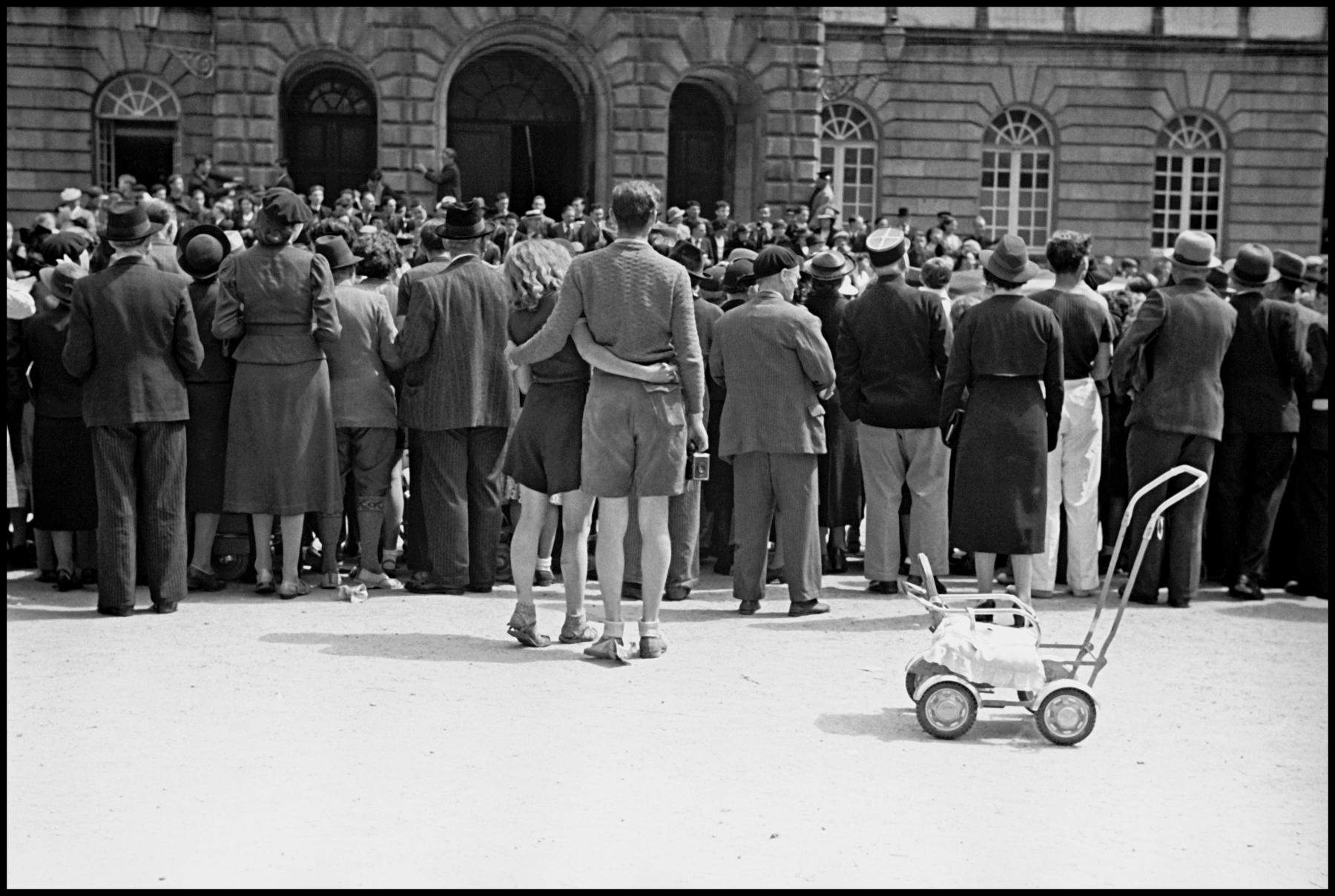Robert Capa's photos and reportages in more than two decades on display in Aosta
After Robert Doisneau and Tina Modotti, the two hits of the past months, great international photography returns to the Saint-Bénin Center in Aosta. This time with a protagonist in the world history of photography who has risen to myth: Robert Capa, pseudonym of Endre ErnÅ‘ Friedmann (Budapest, 1913 - Thai Binh Province, 1954).
The exhibition, Robert Capa. The Work 1932 - 1954, scheduled from May 6 to Sept. 24, 2023, curated by Gabriel Bauret, in collaboration with Daria Jorioz, director of the Structure Exhibition Activities and Cultural Identity Promotion, presents 300 works by the Hungarian naturalized American photographer. Selected from the archives of the Magnum Photos agency, the photos will comprehensively cover Capa’s output from his beginnings in 1931 to his death in 1954 in Indochina, wounded by a landmine while documenting the war at the front.
At the Saint-Bénin Center in Aosta, visitors will be able to admire the war images that forged Capa’s legend, but not only that. In the photographer’s reportages, as in all his work, there are what Raymond Depardon calls “weak times,” as opposed to the strong times that characterize actions. The weak times bring us back to the man, Endre Friedmann, his sensitivity to victims and the dispossessed, his personal journey from Hungary onward. Images that hint at the photographer’s complicity and empathy with respect to the subjects portrayed, soldiers but also civilians, on the terrains of confrontation, where he most operated and distinguished himself.
This is what Henri Cartier-Bresson wrote of him: “For me, Capa wore the light suit of a great bullfighter, but he did not kill; like a good player, he fought generously for himself and for others in a whirlwind. As fate would have it, he was struck down at the height of his glory.”
The exhibition, promoted by the Assessorato Beni e attività culturali, Sistema educativo e Politiche per le relazioni intergenerazionali of the Autonomous Region Valle d’Aosta, will be divided into 9 thematic sections: Photographs of the beginnings, 1932 - 1935; The hope of a more just society, 1936; Spain: Civic engagement, 1936 - 1939; China under fire from Japan, 1938; Side by side with American soldiers, 1943 - 1945; Toward a newfound peace, 1944 - 1954; Travels east, 1947 - 1948; Israel promised land, 1948 - 1950; Return to Asia: a war that is not his own, 1954.
What makes the exhibition even more intriguing is the opportunity it offers to admire the final use of Capa’s images, namely the publications of his reportages in the French and American press of the time and excerpts from his texts on photography, which among others touch on topics such as blur, distance, craft, political engagement, and war. Also available will be excerpts from a film by Patrick Jeudy on Robert Capa in which John G. Morris emotionally comments on documents showing Capa in action in the field, and finally the sound recording of an interview of Capa with Radio Canada.
For information Autonomous Region Valle d’Aosta Department of Cultural Heritage and Activities, Educational System and Policies for Intergenerational Relations Structure Exhibition Activities and Cultural Identity Promotion tel. 0165.275937 Saint-Bénin Center, Via Festaz 27 - Aosta tel. 0165.272687 e-mail: u-mostre@regione.vda.it
“The exhibition,” anticipates the Director of Exhibition Activities Daria Jorioz, “allows us to retrace all the stages of Robert Capa’s extraordinary career, paying special attention to some of his most iconic images, which have embodied the history of twentieth-century photography. The exhibition aims to highlight the many facets of the work of a passionate and ultimately elusive author, tireless and perhaps never fully satisfied, who did not hesitate to risk his life for his reportages.”
Gabriel Bauret writes in the catalog, “His place in the history of photography could be compared to that of Robert Doisneau, but the comparison stops there: as much Capa is an eternal migrant, with an adventurous spirit, as Doisneau is a sedentary man who nourishes his photography with the subjects he knows how to unearth in Paris and its suburbs.”
 |
| Robert Capa's photos and reportages in more than two decades on display in Aosta |
Warning: the translation into English of the original Italian article was created using automatic tools. We undertake to review all articles, but we do not guarantee the total absence of inaccuracies in the translation due to the program. You can find the original by clicking on the ITA button. If you find any mistake,please contact us.





























